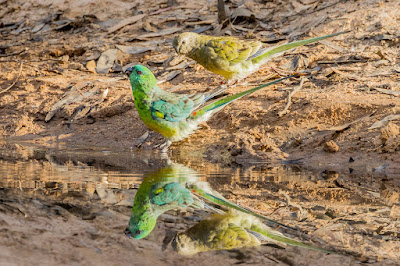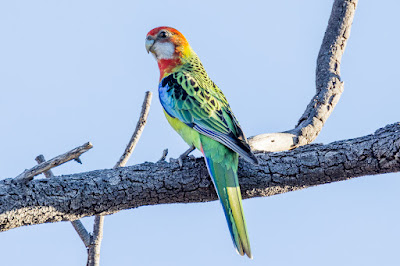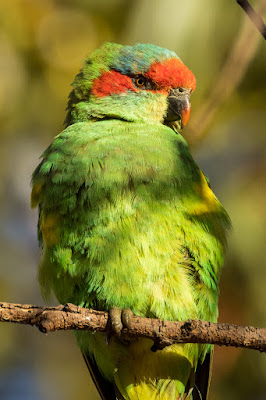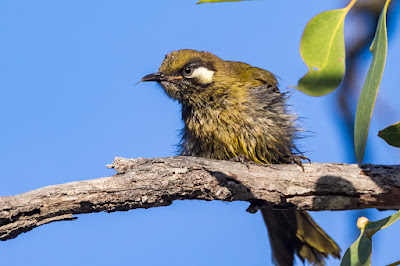Check my birding map for specific location.
I arrived at the Glenalbyn Campground still reasonably early in the morning. It was such a dry area with baked ground, lots of ants and very dry foliage. Ironic really, as it has been closed until recently because of flooding. Initially it seemed really quiet but as I sat and listened, there were pockets of birds interacting and calling.
The first noisy birds were a family of Dusky Woodswallow. The adults stayed up high and circled as they looked for bugs. A juvenile came lower and posed, looking straight at me.
The next morning, I was up early and I discovered that very close to the campground was a small dam with lots of activity around it. The forecast was that it was going to be a very hot day so I moved the van, closed the curtains and settled down. As I was working during the day, I watched the dam. Incredibly I saw 8 species of honeyeater in this one place. Treecreepers, parrots and antechinus spent the morning drinking and sometimes bathing in the water. When it got really hot, they disappeared for a few hours.
eBird Lists
https://ebird.org/australia/checklist/S127042559
https://ebird.org/australia/checklist/S127116418


















































